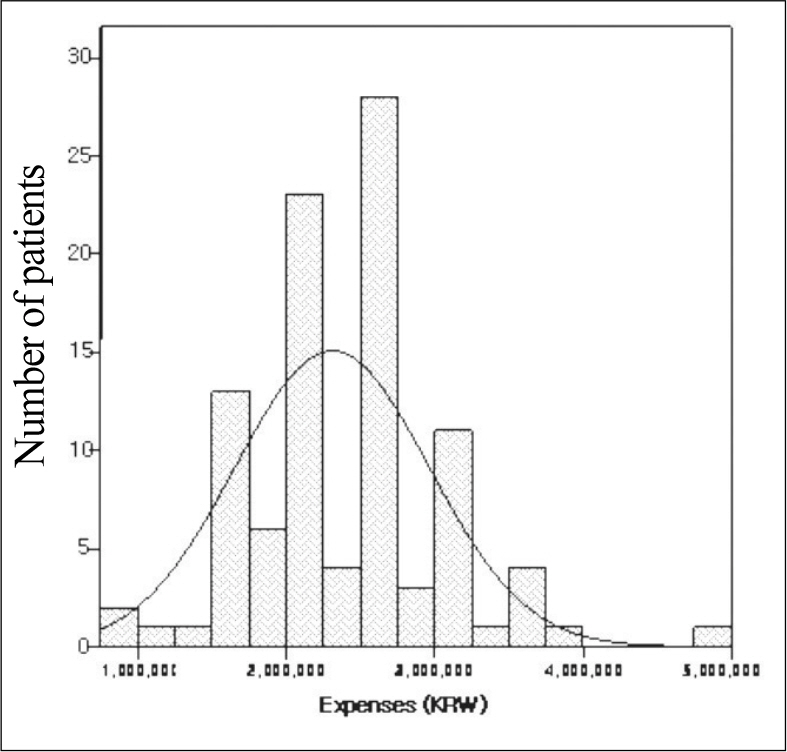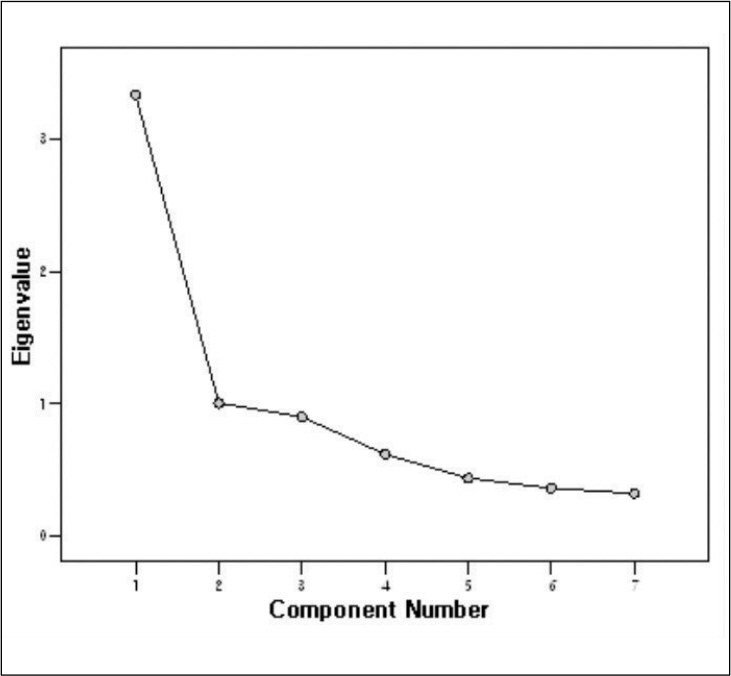J Korean Acad Prosthodont.
2008 Dec;46(6):569-576.
The patients' satisfaction following implant treatment
- Affiliations
-
- 1Department of Chemistry, Wellesley College, USA.
- 2Department of Prosthodontics, School of Dentistry, Seoul National University, Korea. jimarn@paran.com
- 3Department of Prosthodontics, School of Dentistry, Harvard University, USA.
Abstract
-
STATEMENT OF PROBLEM: While patient-centered outcomes are usually not reported, these may represent major aspects of the implant success for the patient. Use of a well-designed patient survey form can be an invaluable asset to the implant practitioners.
PURPOSE: The objective of this study was to investigate patient satisfaction after implant therapy by means of a questionnaire.
MATERIAL AND METHODS: South Korean patients (n = 100), who visited the dental examination center of Soon Chun Hyang university hospital, were asked to fill out the satisfaction questionnaire regarding aspects of cost, comfort, esthetics, chewing, gingival health, food impaction, phonetic aspect, screw loosening, and general satisfaction. Responses to statements were given on the Likert response scale. Four experimental groups of patients were distinguished with various location (A1, A2, A3), year (B1, B2, B3), number of implant replacements (C1, C2, C3), and treatment cost (D1, D2, D3). The reliability of the response scales was measured by calculation of its internal consistency, expressed as Cronbach's alpha. The scales were distinguished by means of factor analysis method. Possible differences in scale scores among the groups were assessed by One-way ANOVA (alpha = 0.05).
RESULTS
Patients responded to most of the statements with high satisfaction. But the mean scale score of statement about cost was low. After the verification of internal consistency and factor analysis, five components, e.g. general satisfaction, comfort, chewing efficiency, esthetics, and phonetic aspect were grouped together. These components could be explained with common meaning and the first factor was named as 'general satisfaction' . Differences in patient satisfaction on the scale with esthetics were present between patients who have been wearing the implant prosthesis less than three years and those more than seven years (B1 < B3).
CONCLUSION
The patients were generally satisfied with the outcome of implant treatment. But the patients' major complaint was high cost and while the statistically significant difference was not shown, the satisfaction scale about food impaction and esthetics was low. So the continuing efforts to make improvements about these problems are needed for the implant practitioners.
Keyword
MeSH Terms
Figure
Reference
-
1.Adell R., Lekholm U., Rockler B., Bra ° nemark PI. A 15-year study of osseointegrated implants in the treatment of the edentulous jaw. Int J Oral Surg. 1981. 10:387–416.
Article2.Lekholm U., van Steenberghe D., Herrmann I., Bolender C., Folmer T., Gunne J. Osseointegrated implants in the treatment of partially edentulous jaws: A prospective 5-year mulitcenter study. Int J Oral Maxillofac Implants. 1994. 9:627–35.3.Buser D., Mericske-Stern R., Bernard JP., Behneke A., Behneke N., Hirt HP., Belser VC., Lang NP. Long-term evaluation of non-submerged ITI implants. Part 1: 8-year life table analysis of a prospective multicenter study with 2359 implants. Clin Oral Implants Res. 1997. 8:161–72.
Article4.Lekholm U., Gunne J., Henry P., Higuchi K., Linde ´ n U., Bergstro ¨m C., van Steenberghe D. Survival of the Bra ° nemark implant in partially edentulous jaws: a 10-year prospective multicenter study. Int J Oral Maxillofac Implants. 1999. 14:639–45.5.Jermt T., Pettersson P. A 3-year follow-up study on single implant treatment. J Dent. 1993. 21:203–8.6.Henry PJ., Laney WR., Jemt T., Harris D., Krogh PH., Polizzi G., Zarb GA., Herrmann I. Osseointegrated implants for single-tooth replacement: a prospective 5-year multicenter study. Int J Oral Maxillofac Implants. 1996. 11:450–5.7.Chang M., Wennstro ¨ m JL., Odman P., Andersson B. Implant supported single-tooth replacements compared to contralateral natural teeth. Crown and soft tissue dimensions. Clin Oral Implants Res. 1999. 10:185–94.
Article8.Pjetursson BE., Karoussis I., Bu ¨ rgin W., Bra ¨ gger U., Lang NP. Patients' satisfaction following implant therapy. A 10-year prospective cohort study. Clin Oral Implants Res. 2005. 16:185–93.
Article9.de Grandmont P., Feine JS., Tache ´R., Boudrias P., Donohue WB., Tanguay R., Lund JP. Within-subject comparisons of implant-supported mandibular prostheses: psychometric evaluation. J Dent Res. 1994. 73:1096–104.
Article10.Allen PF., McMillan AS., Walshaw D. Patient expectations of oral implant-retained prostheses in a UK dental hospital. Br Dent J. 1999. 186:80–4.
Article11.Clancy JM., Buchs AU., Ardjmand H. A retrospective analysis of one implant system in an oral surgery practice. Phase I: Patient satisfaction. J Prosthet Dent. 1991. 65:265–71.
Article12.Schropp L., Isidor F., Kostopoulos L., Wenzel A. Patient experience of, and satisfaction with, delayed-immediate vs. delayed single-tooth implant placement. Clin Oral Implants Res. 2004. 15:498–503.
Article13.Assunc,a ̃o WG., Zardo GG., Delben JA., Bara ̃o VA. Comparing the efficacy of mandibular implant-retained overdentures and conventional dentures among elderly edentulous patients: satisfaction and quality of life. Gerodontology. 2007. 24:235–8.
Article14.Siadat H., Alikhasi M., Mirfazaelian A., Geramipanah F., Zaery F. Patient satisfaction with implant-retained mandibular overdentures: a retrospective study. Clin Implant Dent Relat Res. 2008. 10:93–8.
Article15.Liddelow GJ., Henry PJ. A prospective study of immediately loaded single implant-retained mandibular overdentures: preliminary one-year results. J Prosthet Dent. 2007. 97:126–37.
Article16.Haisch MA. Outcomes assessment survey to determine patient satisfaction. J Contemp Dent Pract. 2000. 1:89–99.
Article17.Anderson JD. The need for criteria on reporting treatment outcomes. J Prosthet Dent. 1998. 79:49–55.
Article18.Locker D. Patient-based assessment of the outcomes of implant therapy: a review of the literature. Int J Prosthodont. 1998. 11:453–61.19.Zitzmann NU., Marinello CP. Treatment outcomes of fixed or removable implant-supported prostheses in the edentulous maxilla. Part I: patients' assessments. J Prosthet Dent. 2000. 83:424–33.
Article20.Guckes AD., Scurria MS., Shugars DA. A conceptual framework for understanding outcomes of oral implant therapy. J Prosthet Dent. 1996. 75:633–9.
Article21.Lewis DW. Optimized therapy for the edentulous predicament: cost-effectiveness considerations. J Prosthet Dent. 1998. 79:93–9.
Article22.Sonis ST., Fazio R., Setkowicz A., Gottlieb D., Vorhaus C. Comparison of the nature and frequency of medical problems among patients in general, specialty and hospital dental practices. J Oral Med. 1983. 38:58–61.23.Nery EB., Meister F Jr, et al. Ellinger RF, Eslami A, McNamara TJ. Prevalence of medical problems in periodontal patients obtained from three different populations. J Periodontol. 1987. 58:564–8.24.Likert R. A technique for the measurement of attitudes. Archives of Psychology. 1932. 140:1–55.25.Likert R. Public opinion polls. Sci Am. 1948. 179:7–11.
Article26.Wolfle D., Likert R, et al. Standards for appraising psychological research. Am Psychol. 1949. 4:320–8.
Article27.Cronbach LJ. Coefficient alpha and the internal structure of tests. Psychometrika. 1951. 16:297–334.
Article28.Guilford JP., Frutcher B. Fundamental statistics in psychology and education. 5th ed.New York: McGraw Hill;1973. p. 121–34.29.Nunnally JC. Psychometric theory. 2nd ed.New York: McGraw Hill;1978. p. 278–92.30.Tepper G., Haas R., Mailath G., Teller C., Bernhart T., Monov G., Watzek G. Representative marketing-oriented study on implants in the Austrian population. II. Implant acceptance, patient-perceived cost and patient satisfaction. Clin Oral Implants Res. 2003. 14:634–42.
Article
- Full Text Links
- Actions
-
Cited
- CITED
-
- Close
- Share
- Similar articles
-
- Evaluation of subjective satisfaction of dental implant patients
- Structural equation modeling for association between patient satisfaction and quality of life after implant surgery
- Patient Satisfaction with Implant Based Breast Reconstruction Associated with Implant Volume and Mastectomy Specimen Weight Ratio
- A survey of the satisfaction of patients who have undergone implant surgery with and without employing a computer-guided implant surgical template
- Comparison of marginal bone loss and patient satisfaction in single and double-implant assisted mandibular overdenture by immediate loading





